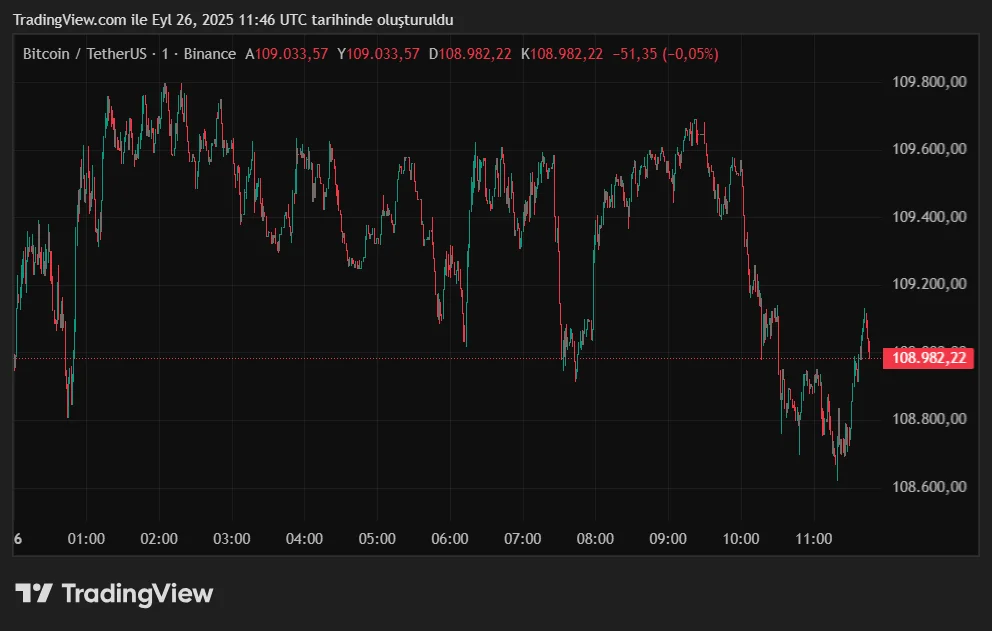Bitcoin fell below $109,000 ahead of US inflation data, unsettling investors. The Personal Consumption Expenditures (PCE) price index, which the Fed closely monitors, is seen as particularly important in reshaping market expectations for interest rate cuts. According to a Reuters poll, the data is expected to rise 0.3 percent monthly and 2.7 percent annually in August. The results will be released at 3:30 PM Turkish time.
Uncertainty surrounding the US Federal Reserve's (Fed) interest rate decision throughout the week significantly weakened risk appetite in crypto markets. The volatile atmosphere following the FOMC meeting increased selling pressure on Bitcoin. According to market data, BTC fell below $109,000 within 24 hours, approaching a 6 percent weekly loss. Ethereum and many altcoins are also closing out the week with double-digit declines.

The situation on the ETF front has also dampened investor spirits. Spot Bitcoin ETFs in the US recorded net outflows of approximately $258 million on September 25th. BlackRock's iShares Bitcoin Trust was the only fund to see limited inflows. Spot Ether ETFs also experienced net outflows of approximately $251 million on the same day, marking the fourth consecutive day of outflows for these funds.
The futures market also felt the brunt of this selling wave. According to CoinGlass data, approximately $1 billion worth of crypto positions were liquidated in the last 24 hours. More than 225,000 investors liquidated, with the largest single transaction being a $19.3 million ETH/USDT position. This development revealed that the market is undergoing a significant cleanup process due to leveraged trading.
According to experts, Bitcoin broke through short-term support levels, falling to $108,652, before making a limited recovery. While BTC was still up around 4.5% in September, October has historically been a positive month for BTC. However, he points out that a clear recovery cannot be confirmed until the price breaks the $113,500–116,000 range with strong volume.
How are investors acting?
Meanwhile, on-chain data suggests that institutional and large investors are also on the sell side. Since August 21st, whales have been net sellers, while long-term investors have been focused on profit-taking. This situation is increasing pressure on the spot market, while the daily fluctuation of ETF inflows and outflows has left the market directionless.
All eyes are now on PCE data. A deviation from expectations could alter the Fed's year-end interest rate policy expectations, which could set a new direction for risky assets. While analysts emphasize that long-term trends and seasonality remain positive for crypto, they emphasize that caution is more important in the short term than aggressive buying.
With this situation, the crypto market is focused on new signals from both macro data and investor behavior. Unless consistent inflows, particularly from ETFs, are seen, it appears unlikely that Bitcoin will mount a strong recovery. The primary strategies for investors appear to be capital preservation and risk management.




